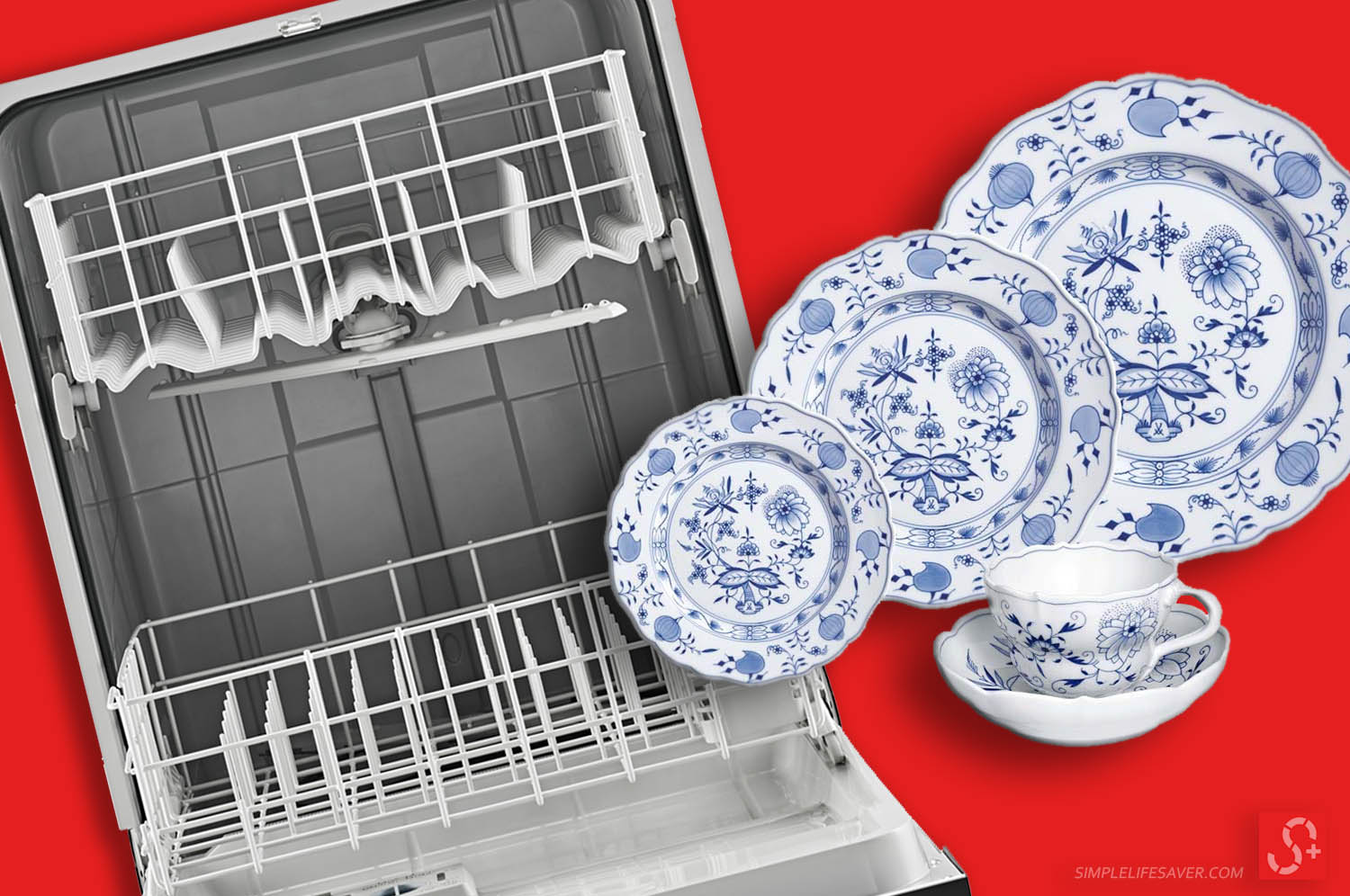Porcelain is one of the most beautiful, delicate materials used in dishware. Often our most treasured family heirlooms are made from porcelain. We want to keep it safe from harm—but, at the same time, we want to make our lives as easy as possible.
So, what are actually the care instructions for porcelain? Are they safe in our modern-day kitchen appliances?
Most types of porcelain dinnerware made after 1979 are dishwasher safe. However, if your porcelain has decorative print, is older than ten years, or has any fine cracks, I recommend washing it by hand to preserve it.
Now let’s take a more in-depth look at how to keep your porcelain intact without spending hours on the care and maintenance of it.
What is Porcelain, Actually?
Porcelain is a ceramic material—meaning, hard, porous, and brittle—made by heating clay of kaolinite at a high temperature.
These high temperatures mixed with the inherent properties of porcelain clay allow for low water absorption, giving it the typical qualities of porcelain.
Porcelain, however, compared to other ceramics, has a higher resistance—i.e., a high density and a rather low porosity, as far as ceramic materials are concerned.
All this means that it is durable, soft to the touch, and more expensive and beautiful than other pottery-crafted dishware.
Caring for your porcelain
Porcelain is a bit of a paradox, being both incredibly durable and somewhat delicate (under certain conditions).
In everyday use, it is much stronger than the materials of average dishware.
However, to keep it that way, porcelain requires a bit more care and protection than the average ceramic plate.
What to know when putting porcelain in a dishwasher
You’ll probably be surprised that nearly all types of porcelain are, in fact, dishwasher safe.
However, you’ll want to make sure of a couple of things:
- Your china was manufactured after 1979. This mainly has to do with the specific protective veneer and the specific type of porcelain clay that became more mainstream in porcelain production after this date. If your china dates before this date, it’s possible it could be fine, but you probably won’t want to take the risk.
- Check the underside of the dish for care instructions. On the bottom of most manufactured china, you’ll see a couple of things: the brand/brand logo, perhaps the model/batch number, and whether or not the china is safe in the dishwasher. If your china was made before 1979 and says it’s dishwasher safe, it’s best to wash the dish by hand since our modern dishwashers are much stronger than they were back then.
- Check the brand of your porcelain. Many of the popular porcelain brands such as Lennox, Noritake, and Mikasa are all dishwasher safe. Your china brand probably has a website that could give you further information about care instructions.
- Set your dishwasher settings accordingly. If you’ve made sure your china is dishwasher safe, chances are it still needs a gentler wash than your regular wash cycle. Most dishwashers have a “light” or “china” cycle option. These cycles will make sure the water pressure and temperature are at a lower level.
- Does your china have patterns? Most plain-white porcelain is safer in dishwashers than porcelain with patterns or detailing. If the patterns are under the glaze, then your china is acceptable in the dishwasher. However, if the pattern is above—this is obvious as it will be raised, rather than totally glossy—or uses 3-D metallic detailing, it’s best to keep it to handwash only.
Can porcelain head in the heated drying cycle?
Metallic details, whether raised or not, should always be left to air dry.
All other porcelain that is dishwasher safe should never be left on a full-heat drying cycle.
Most dishwasher settings at “light” or “china” will take care of this, but it’s best to make sure ahead of time before the damage is done.
Once you’ve made sure your porcelain is dishwasher safe, here are some of our tips for keeping it safe during its wash cycle:
- Using a sponge or rubber kitchen utensil, remove any larger bits of food before placing the dish in the dishwasher.
- Use a mild detergent containing no bleach. Make sure to stay far away from any chlorine ingredients. Be advised that detergents containing oxygen or citrus scents could dull the shine of the porcelain.
- Space out your china evenly in the dishwasher—about every other dish space—and make sure that it washes alone with no other dishware.
- You can let your china air dry in the machine overnight before storing it directly.
Dealing with hairline cracks in porcelain dinnerware
If you start to notice hairline cracks in your old dinnerware, it might be time to retire that plate.
Exposing your dinnerware to repeated heat and water from the dishwasher can cause the plate to crack entirely eventually.
This can be troubling, especially if the dinnerware is a family heirloom.
If you’re still looking, take that vintage family dinnerware out on Thanksgiving, make sure to give it a light hand washing using warm water and delicate soap to reduce the chance of cracking.
Last thoughts
In any case, if you’re not sure about the care instructions of a specific set of china or dish, it’s best to stay on the safe side.
Handwashing with a delicate soap and avoiding microwaves is a certain way of keeping your porcelain in tip-top shape.
So, if it’s something you really care about, why run the risk?








